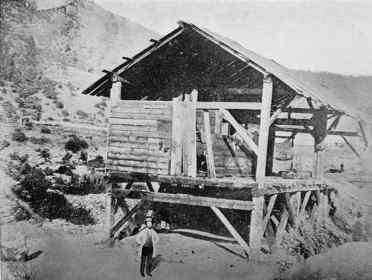Discovery of Gold in California

Quick Facts
Gold in California was discovered by a carpenter James W. Marshall at Sutter's mill in Coloma on January 24, 1848.
Marshall and the owner of the Sutter's mill, John Sutter wanted to keep the discovery a secret.
The news of Marshall's find spread very quickly and reached the Eastern United States by September 1848.
The US President James K. Polk formally announced discovery of gold in California on December 5, 1848.
Over 80,000 gold-seekers came to California in 1849 alone.
Prospectors that came to California from all over the world were called the forty-niners (after the year 1849).
Very few people got rich from gold prospecting and suffered great hardships.
Neither Marshall nor Sutter became wealthy from the discovery of gold.
On January 24, 1848, a carpenter James W. Marshall (1810-1885) initiated a chain of events that dramatically transformed California as well as the rest of the United States. That day he was working at the Sutter’s mill on the bank of South Fork American River in Coloma when a shiny stone in the river caught his eye. He bent over to pick it up when he noticed another one and then another. He soon collected about a half ounce of what seemed like gold.
Marshall then continued working at the sawmill and told his workers about his discovery later that day. They laughed at him when he told them that he thinks that he had found gold but the next day he decided to tell his boss and the owner of the sawmill, John Sutter (1803-1880) about it. The Swiss-born American pioneer and the founder of the Sutter’s Fort initially refused to believe that what Marshall had showed him was really gold but after conducting several tests and checking the encyclopedia, there was no doubt that Marshall indeed discovered gold.
The excitement about the Marshall’s find soon turned into a worry. Marshall and Sutter feared that the area would be soon overflown by hoards of gold-seekers if the news of Marshall’s discovery would spread. They asked the workers to keep the discovery of gold a secret but the word was soon out. The workers at Sutter’s mill started panning for gold rather than constructing the sawmill and a newspaper The Californian reported about the discovery of gold at Sutter’s mill as early as March 15, 1848. By September of the same year, the news of Marshall’s find reached the Eastern United States and the US President James K. Polk formally announced the discovery of gold in California on December 5, 1848.
The reports of the riches in California waiting to be collected resulted in the largest mass migration in American history. Over 80,000 people reached California in 1849 alone and about 300,000 in the next decade. Most of the forty-niners (called after the year 1849 when California Gold Rush was officially announced) were the Americans but many prospectors came from as far as Europe, China and Australia unaware that they would suffer great hardships. Very few became wealthy from gold prospecting and most of them barely earned enough to survive despite the fact that over $200 million of gold was extracted between 1848 and 1853. Ironically, greater fortunes were made from supplying the miners rather than gold prospecting.
Neither James W. Marshall nor John Sutter never made a fortune from the discovery of gold in California. Sutter who never seemed to have been particularly interested in the gold rush spent most of his last years struggling with the US authorities about a compensation for the prospectors destroying his land and died relatively poor in 1880. Marshall did not have luck with gold either and died virtually penniless in a small cabin not far from the Sutter’s mill.




